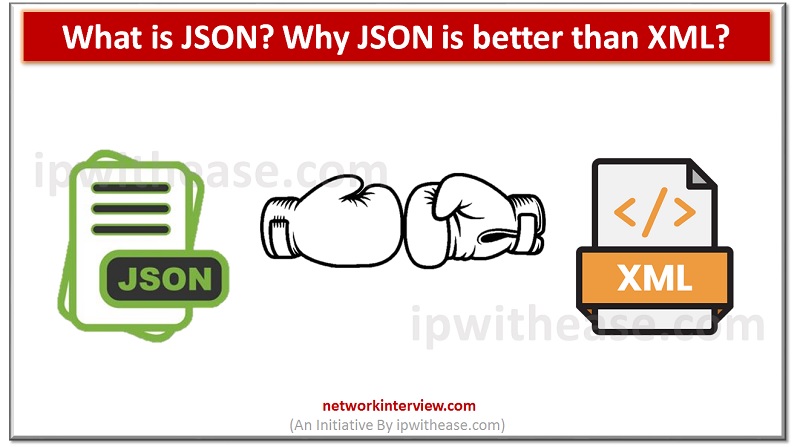
What is JSON? Why JSON is better than XML?
If you are a young developer who is interested in data science and Client-Server working then you must be wondering what this JSON is? Why everywhere I go I see this first?
Well, because it is the first thing you should learn when you are serious about Data Science. In this article, you will get a full understanding of it and a basic introduction to its workings.
Okay without further ado let’s get started.
What is JSON?
The word JSON refers to the JavaScript Object Notation. It is just a way of representing the data in the text form which is independent of the platform. The Exchange of Data between the server and browser can only be in text format.
So the Data is stored in the JavaScript Object is converted into JSON, a text format, and send to the server from the browser. And then server converts them back to the JavaScript Object and undergoes the further process. Are you still confused? Then take it this way.
The JSON file is like a PDF file (different but used for the same purposes). PDF files are used universally because the alignment or presentation won’t change in the transfer. JSON also stays the same irrespective of the platforms. It is not corrupted and can be used across all platforms like Android, Mac, and Windows, etc…
PDF files are denoted by the file extension .pdf and JSON files are noted by the extension .json.
Working in JSON:
You can use it to transfer tons of data between the companies on the daily basis. Like the name says the coding of the JSON is more similar to the JAVA Script, so if you have experience in JAVA script then it will be easy for you to work on the JSON. However, JSON is an independent format that can be accessed in all types of programming languages.
The Syntax and structure of the JSON are very simple. It is stored in the Key-Value format. Here is a simple example of the JSON –
{
“first_name” : “Sammy” ,
“last_name” : “Shark” ,
“Followers”: 987
“online” : true
}
You can see the JSON is entered between two curly brackets in the Key-value format. The key is entered before or to the left side of the colon with double quotes (“first name”) and the string or value is entered to the right side of the or after the colon with double quotes (“Sammy”).
If the value is a number then the double quotes are not added to help calculations. And the doubt quotes are not added for the Booleans like true or false also. The JSON Values can be formed from the following 6 types –
- Strings
- Numbers
- Objects
- Arrays
- Booleans
- Null
Why JSON is better than XML?
The XML (extensible mark-up language) file format is considered as the alternative for the JSON file; however, JSON has many advantages over the XML format.
Before the invention of the JSON, XML is widely used throughout the world for open data interchange. But now it has changed here are the advantages or uses of JSON.
- In JSON the use of verbose or words is lesser than the XML.
- JSON is cost-efficient than XML. You will need a lot of memories and energy to process that is for parsing the XML software. However it very faster and accurate in JSON.
- The data structures or model is the best matching. The JSON Data model is like a map where the XML is like a tree.
- JSON is limited in terms of what the object can be modeled. Well, most people see it as a bad thing, but it is a good thing. This limitation makes the code simpler, predictable, and easy to read.
- The objects are represented in the same way in code, so you can go from objects to objects in the JSON code which is not possible in the XML.
Conclusion
In short, JSON is easy to read and write lightweight text-based language-independent format.
- It is used while creating JAVA script-based applications like a web browser or extensions.
- It is used to transmit data between servers and web applications.
- It is used to serializing and transmitting structured data over the network.
- It can be used in any type of modern programming language.
Leave your thoughts on the article in the comment section below.
Continue Reading:
JSON vs SOAP: Detailed Comparison
Understanding SOAP Web Services
Tag:software



